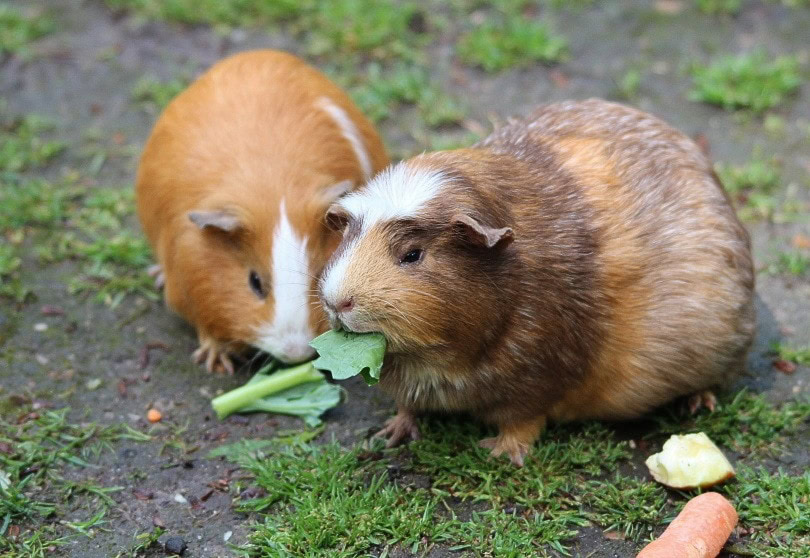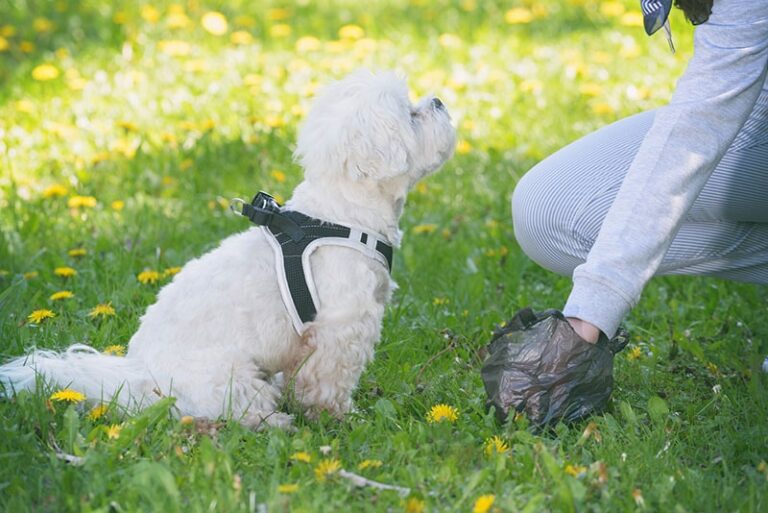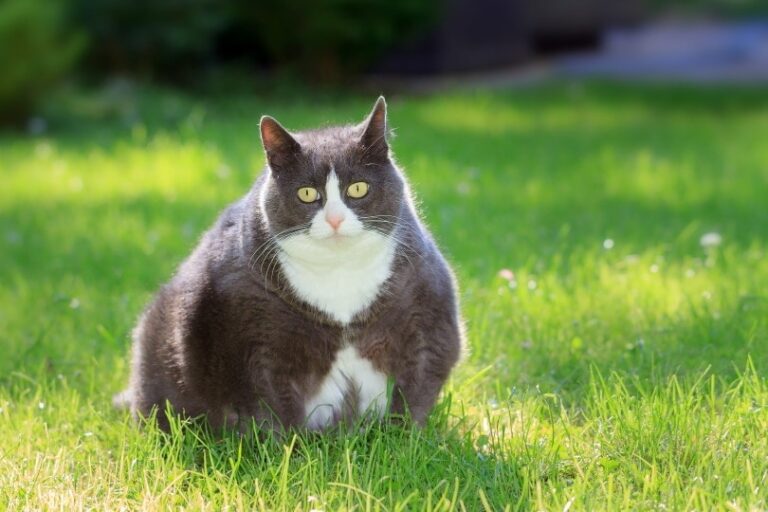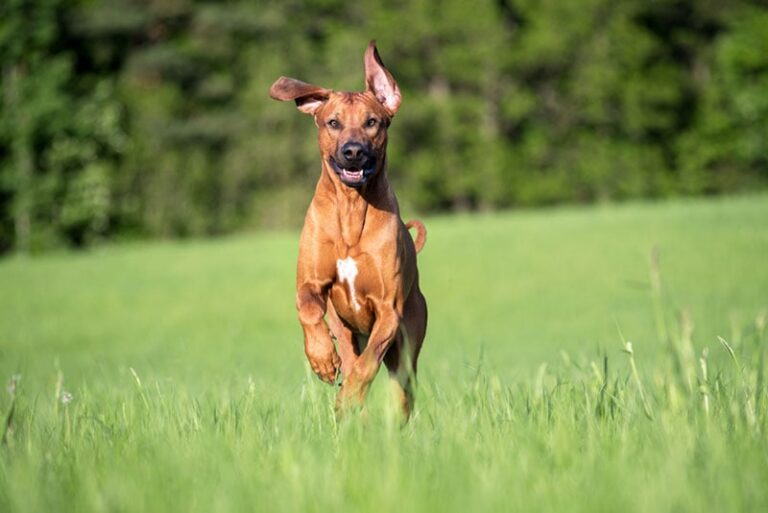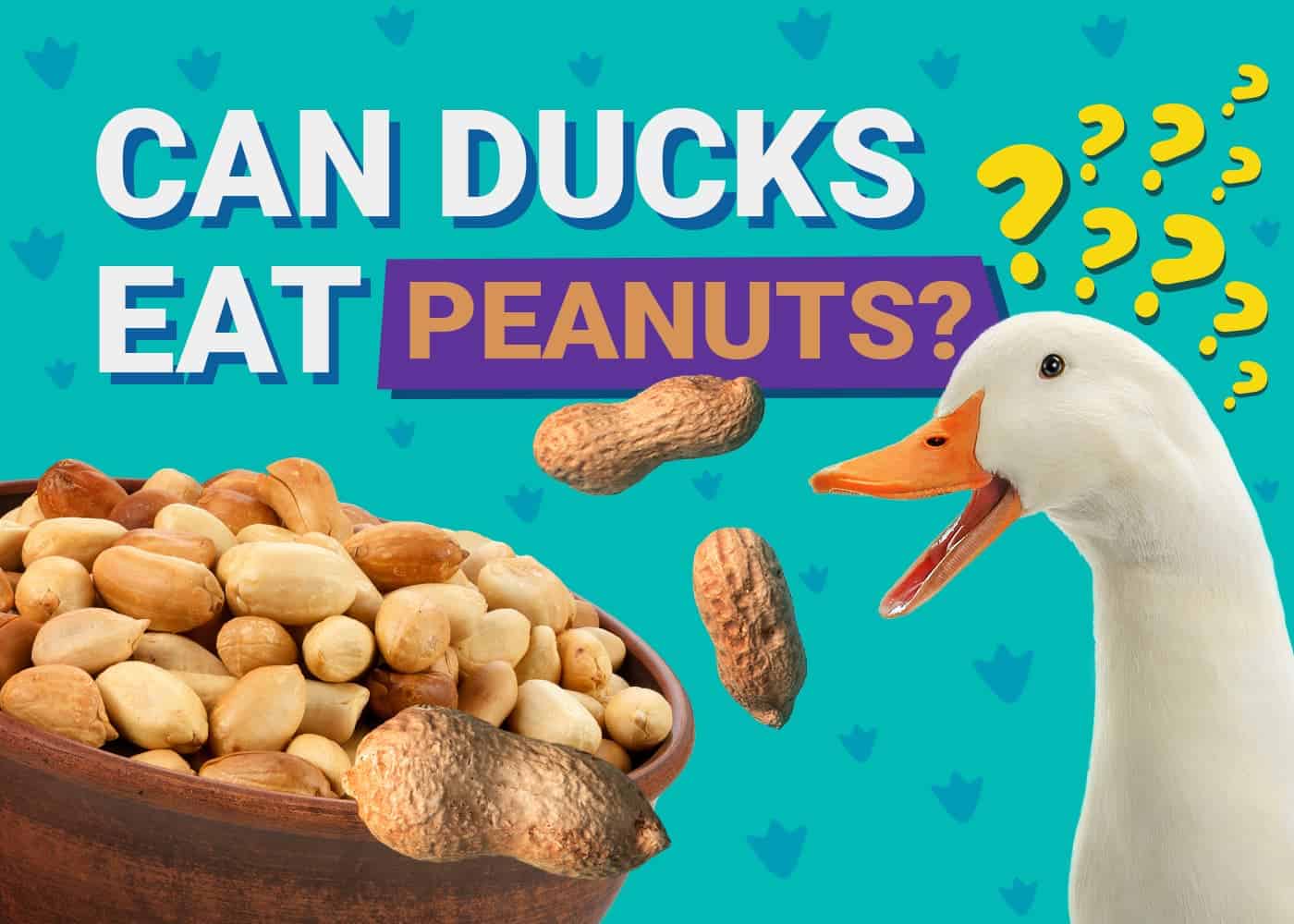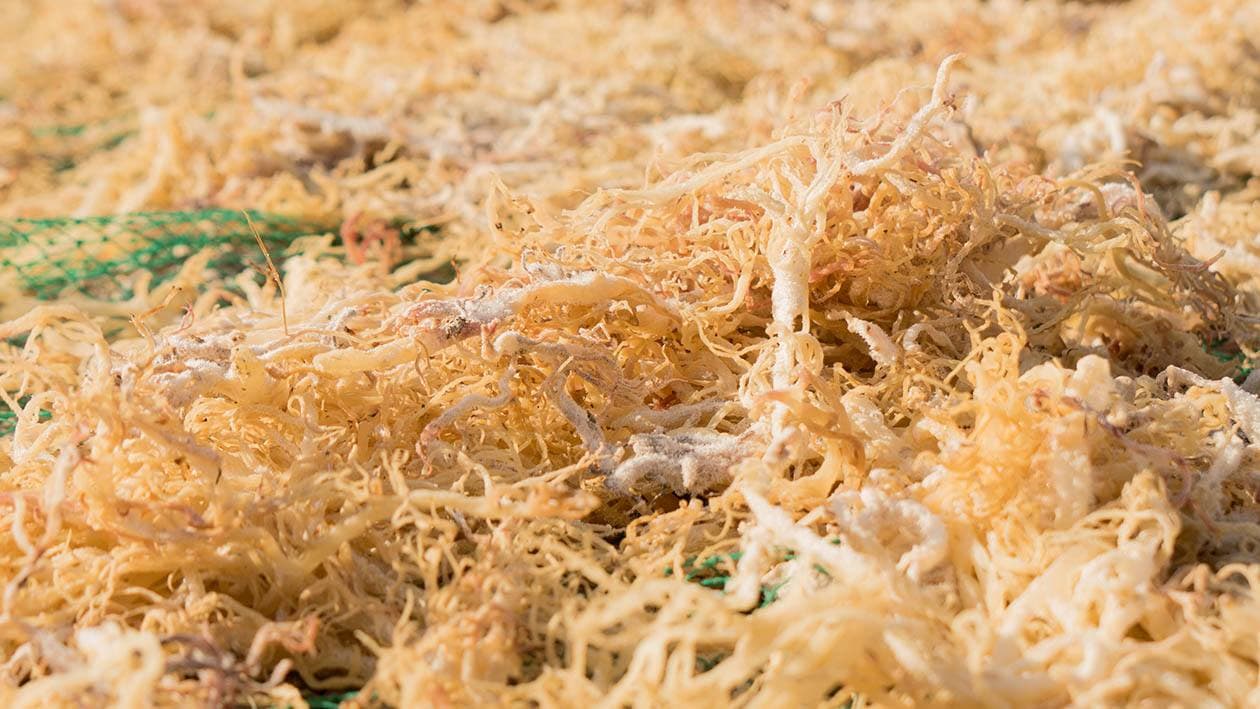VET APPROVED

The information is current and up-to-date in accordance with the latest veterinarian research.
Learn more »If you just purchased your first guinea pig, you are probably excited to learn more about it. One of the most important things to understand is how to provide them with a well-balanced diet that will keep them healthy so they can live a full life.
Guinea pigs like grass and Timothy hay, but they also like various vegetables. Here, we compiled a list of safe vegetables that you can feed your pet, thus minimizing the risk that they might ingest something unhealthy. This way, you can feel good about the dinners that your guinea pig is eating.

The 17 Best Vegetables for Guinea Pigs (A–Z):
1. Asparagus
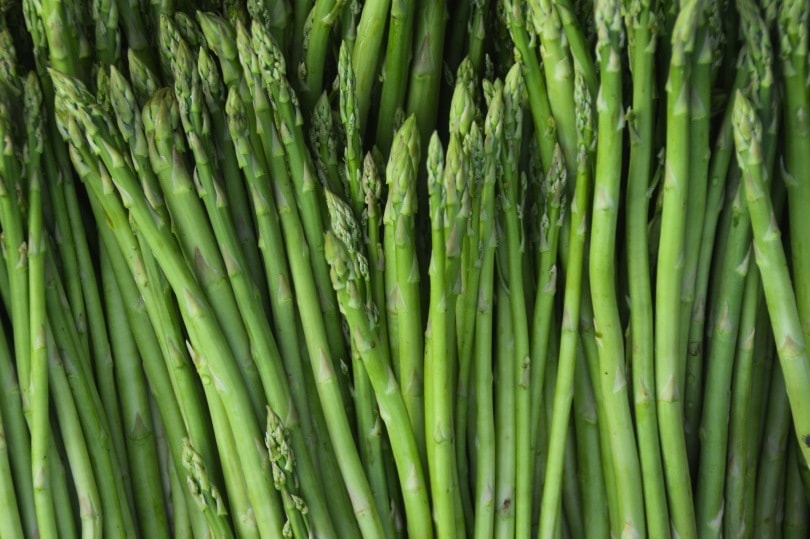
Asparagus is a perfect example of a nutritious vegetable that you can frequently feed your guinea pig. It’s low in sugar and provides your pet with some vitamins and minerals. It’s also unlikely to cause an upset stomach or diarrhea. However, it’s relatively high in oxalates. It’s considered low in pesticides, so there is less danger of health problems as long as you thoroughly wash it. You can feed your pet a few pieces of raw, chopped asparagus a couple of times a week.
2. Basil
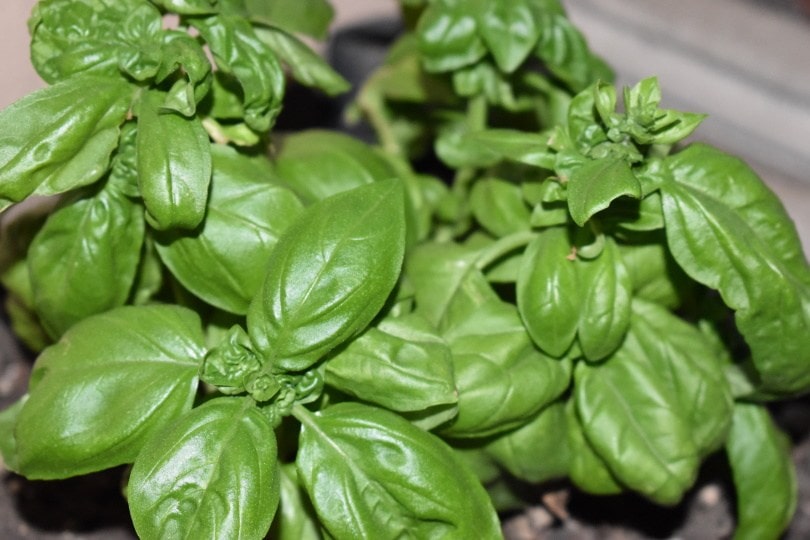
Basil is healthy and will provide your pet with plenty of vitamin C and other nutrients, and it’s low in fat and sugar. However, it does contain a lot of calcium, so you shouldn’t give it to your pet every day. Most experts recommend limiting amounts to less than a handful of chopped basil once or twice a week.
3. Beets
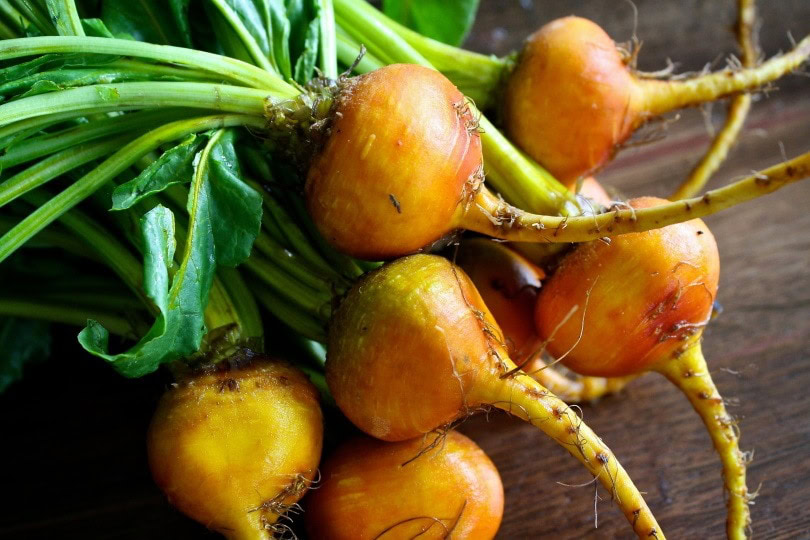
You can feed your pet guinea pig all parts of the beet plant, including the roots, leaves, and stalk. It provides vitamins A and C, potassium, and fiber. The only downside to beets is that they have a lot of calcium, which can be harmful to guinea pigs if they get too much. It is also rich in sugar, so most experts recommend giving your pet no more than 1–2 small pieces of beetroot or a few beet leaves once a week as a treat, not as a regular part of the diet.
4. Bell Peppers
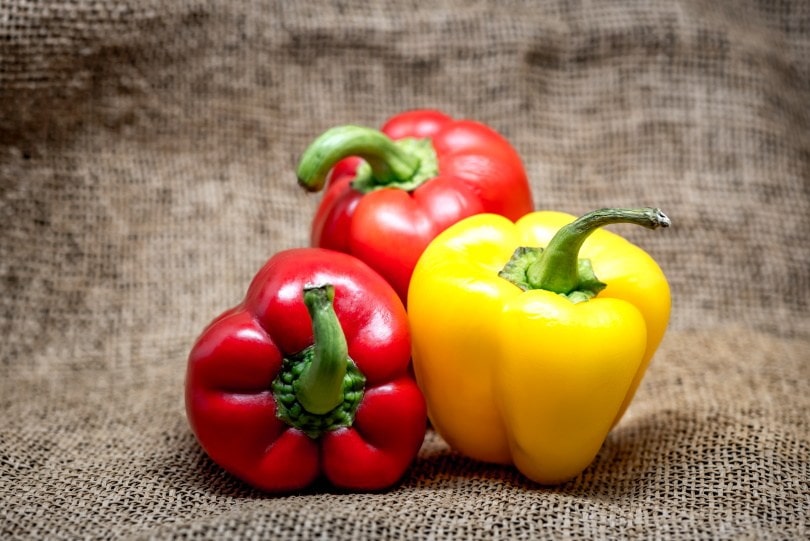
Bell peppers are great vegetables to feed your pet. They contain several vitamins and minerals, including vitamin A, and are a great source of vitamin C, which is very valuable to guinea pigs. Bell peppers are also low in sugar, so they make a perfect staple food. Cut raw bell peppers into manageable sizes, and give them to your pet every day.
5. Broccoli
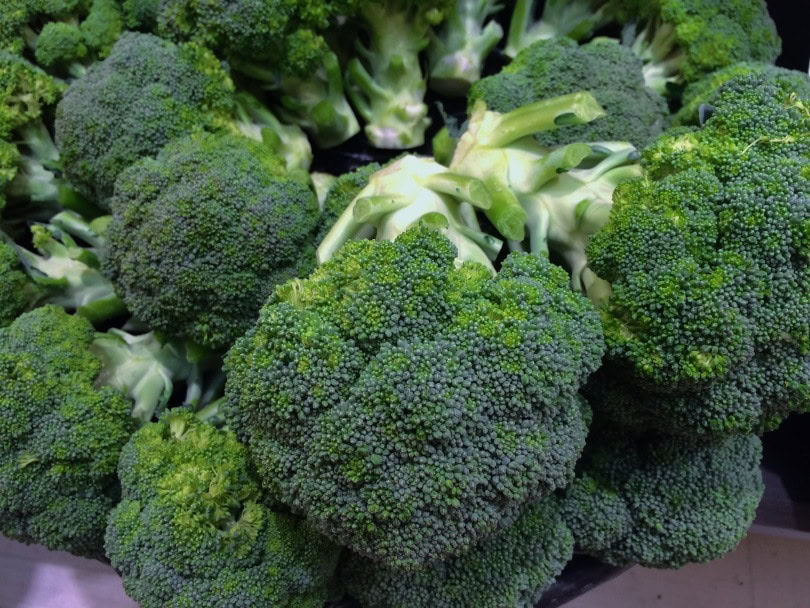
Broccoli is a safe food to give your guinea pig, and you can begin adding it to its daily diet. All parts of the plant are edible and will provide your pet with plenty of beneficial nutrients. However, in excess, it can cause gas. Most experts recommend adding about 1 teaspoon of broccoli to your pet a few times a week. Avoid mixing it with other cruciferous vegetables, such as cauliflower or cabbage, to prevent excessive gas formation and subsequent discomfort.
6. Cabbage
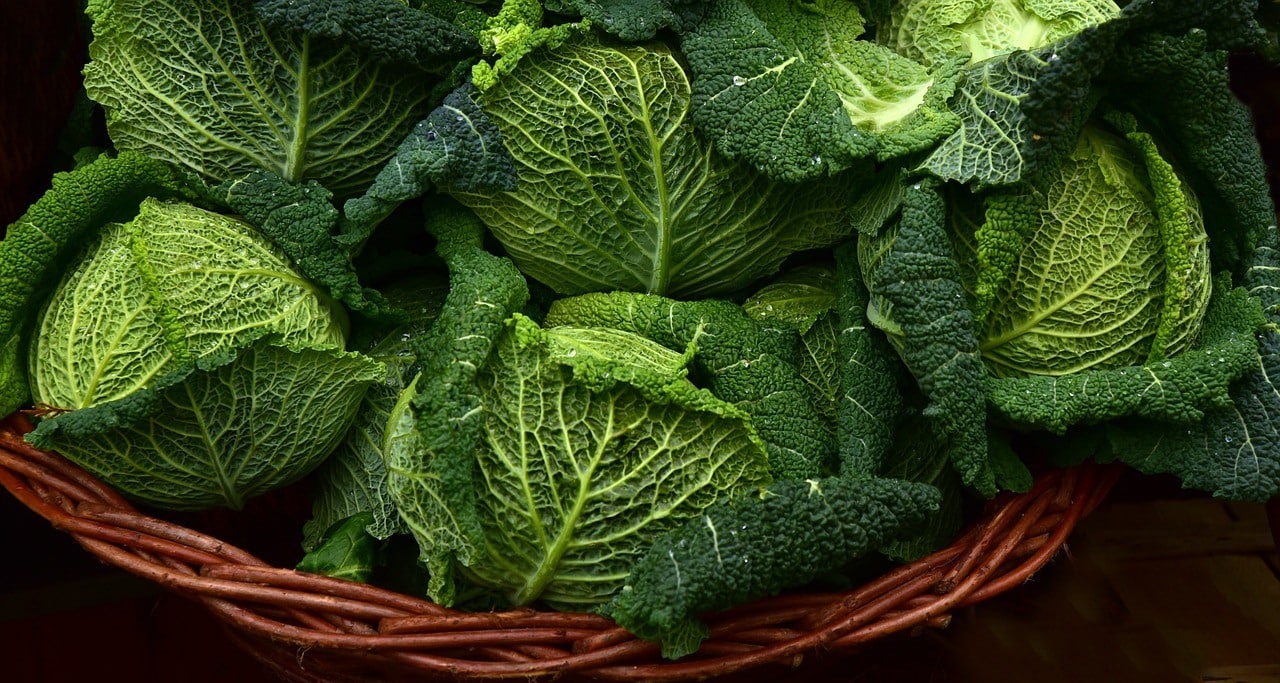
Both the red and green varieties of cabbage make an excellent addition to your guinea pig’s diet, and most experts recommend feeding it raw two or three times a week for optimal health. Cabbage has plenty of vitamins and minerals but can cause digestive issues for some guinea pigs. Start with tiny amounts to see how your pet reacts, and avoid mixing it with other gas-producing veggies like broccoli or cauliflower.
7. Carrots
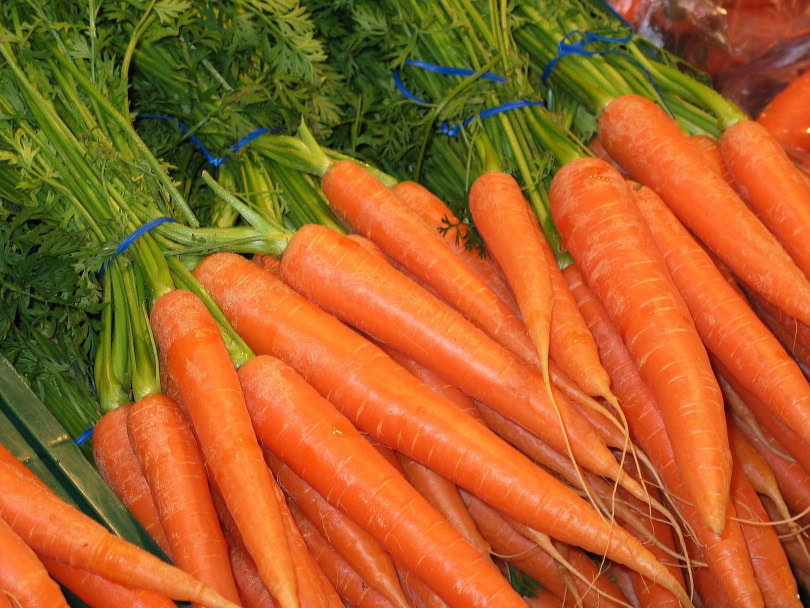
Carrots are healthy vegetables that your guinea pig will love to chew on. They’re likely to be among their favorites, so they make great treats. Carrots are high in sugar, though, so you can only supply them in small amounts of less than ¼ cups several times a week. Your pet can also eat the green carrot tops, which contain a lot of nutrients, but these are high in calcium, so you should only provide them once a week.
8. Cauliflower
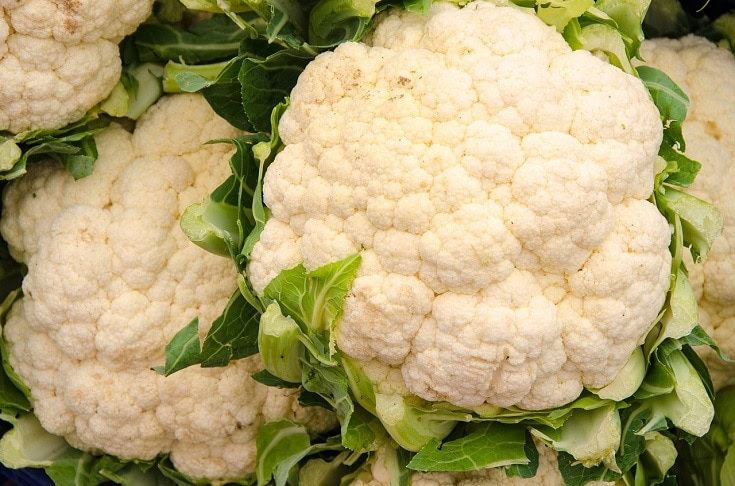
Cauliflower is a common garden vegetable that is safe for your guinea pig in small amounts. Most pigs will prefer the leaves of the plant, which are also better for them to eat. Experts recommend providing it raw because cooking the vegetable will remove the nutrients. Avoid offering it with broccoli or cabbage.
9. Celery
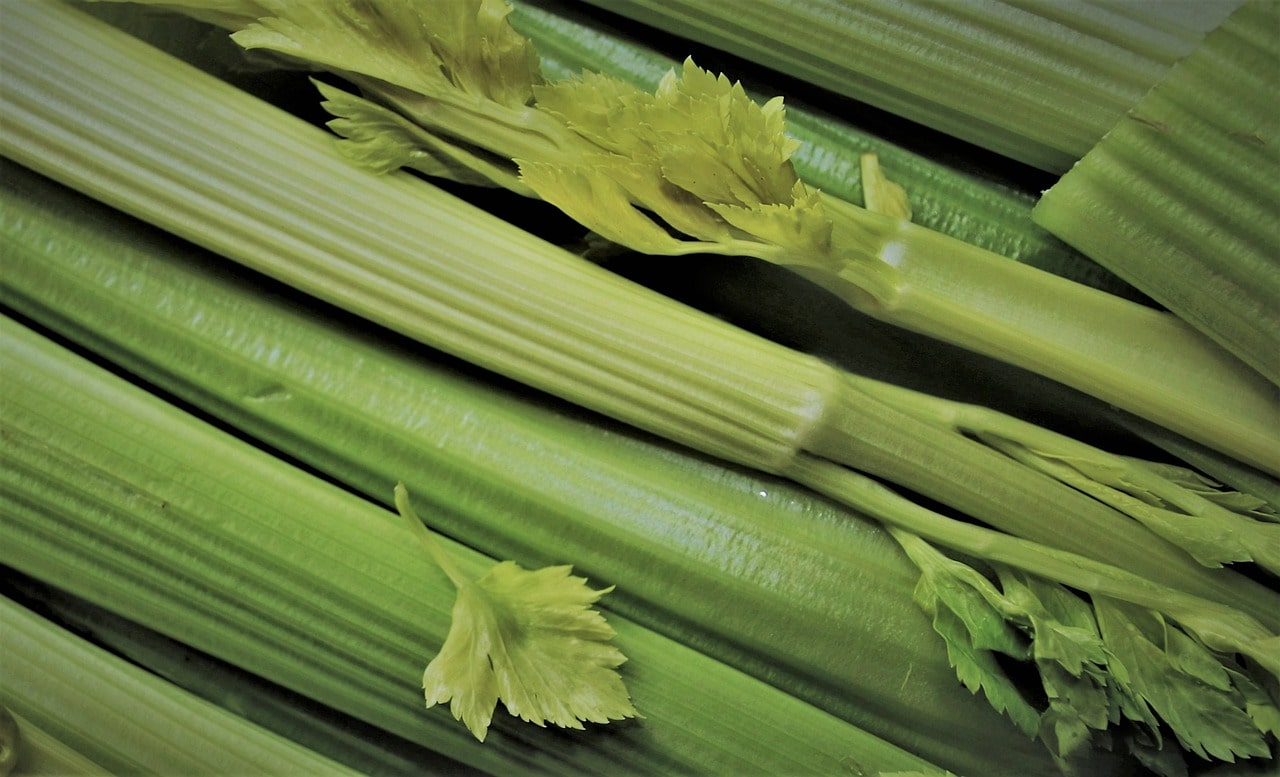
Celery is another nutritious food that you should only provide your guinea pig once or twice a week because it can cause diarrhea in some pets and has a lot of calcium, which can cause health problems. It’s a rich source of vitamin C, and guinea pigs tend to enjoy it, but you should only provide no more than ¼ of a stalk chopped into tiny pieces, along with the leaves, at a time for a treat, once or twice a week. Adding other vegetables can also help balance the nutrients and reduce the risk of diarrhea.
10. Collard Greens
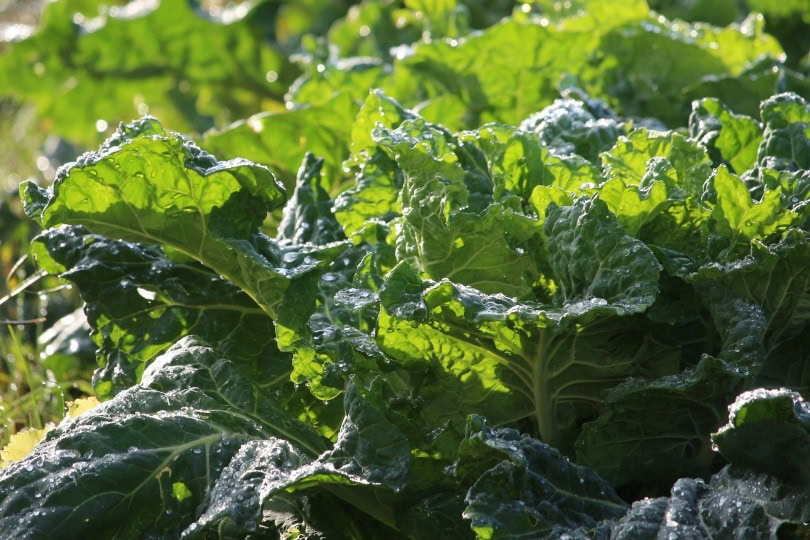
Collard greens contain a wide variety of helpful nutrients, including vitamins A, C, and K. Some studies show that collard greens can help balance blood sugar due to an enzyme called alpha-lipoic acid that it contains. However, it also has high calcium levels and water, so you should only provide less than a handful once a week to prevent diarrhea and other health problems.
11. Cucumbers
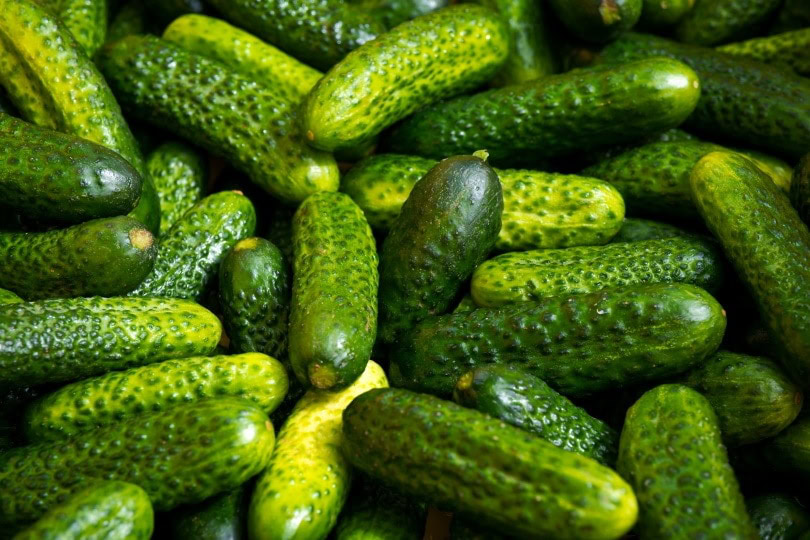
Cucumbers are safe for your guinea pig to eat if you cut them into small pieces, and they contain helpful nutrients. They’re also 97% water, so they have almost no calories and are a great way to hydrate your pet. However, this high water content can also lead to diarrhea, vomiting, and a bloated feeling for your pet. Cucumbers can be offered two times per week, particularly during warmer months. Only give a few thin slices or small chunks (1–2 teaspoons). Always wash thoroughly and remove any large seeds, which can be hard for dogs to digest.
12. Dandelions
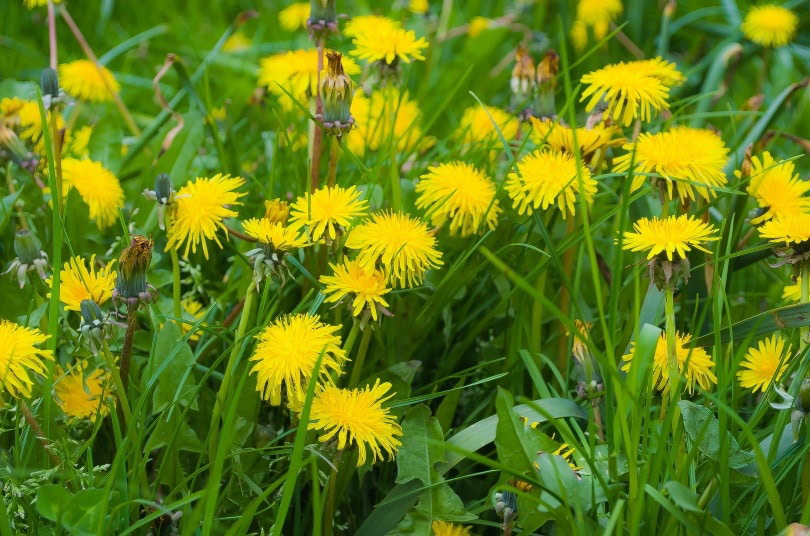
Dandelions are extremely healthy, and you can add them to your pet’s diet every day by breaking a few up into smaller pieces. This weed grows in almost every yard, so it’s one of the least expensive options on this list. However, it is imperative to ensure the area where it grows is pesticide-free and to wash the dandelions first to remove anything that could be harmful to your guinea pig. Likewise, if your guinea pig is prone to bladder sludge, it is best not to offer them daily, as they do contain calcium.
13. Kale
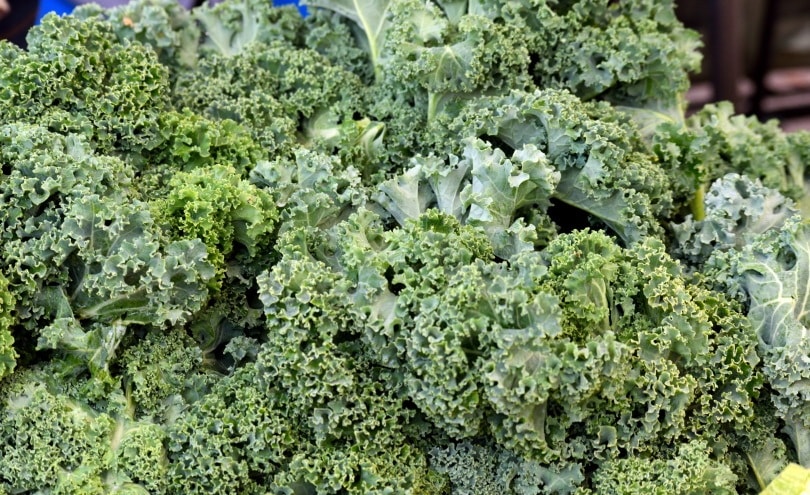
Kale is a healthy food for humans because it’s packed with nutrients. However, it contains too much calcium to give to your pet guinea pig every day. The high moisture content can also lead to diarrhea and vomiting, so most experts recommend limiting it to one or two leaves washed once a week.
14. Romaine Lettuce
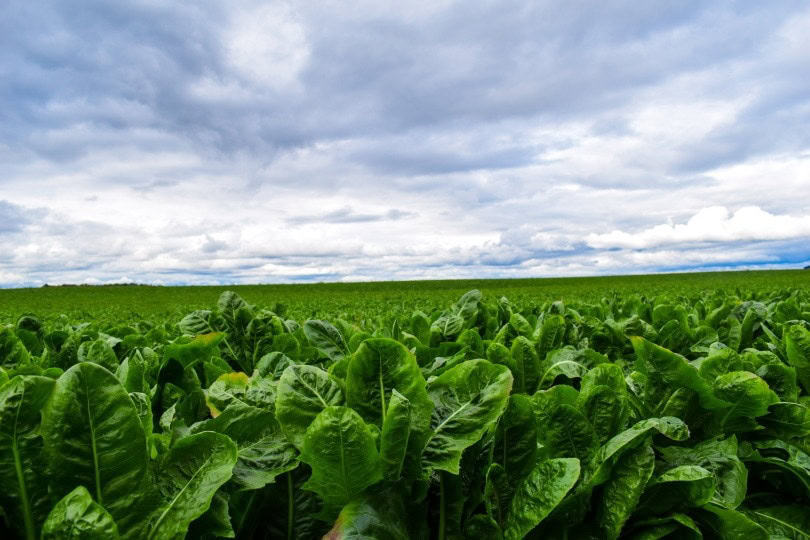
Romaine lettuce is a large leafy green that your guinea pig is sure to enjoy eating. It has plenty of nutrients that are beneficial to your pet, and it also provides them with fiber that will help regulate their digestive system. You can give your pet romaine lettuce several times a week as long as you wash it well to remove pesticides. Cut it into 1-inch squares to make it easier to eat, and you can offer your guinea pig one or two teaspoons.
15. Spinach
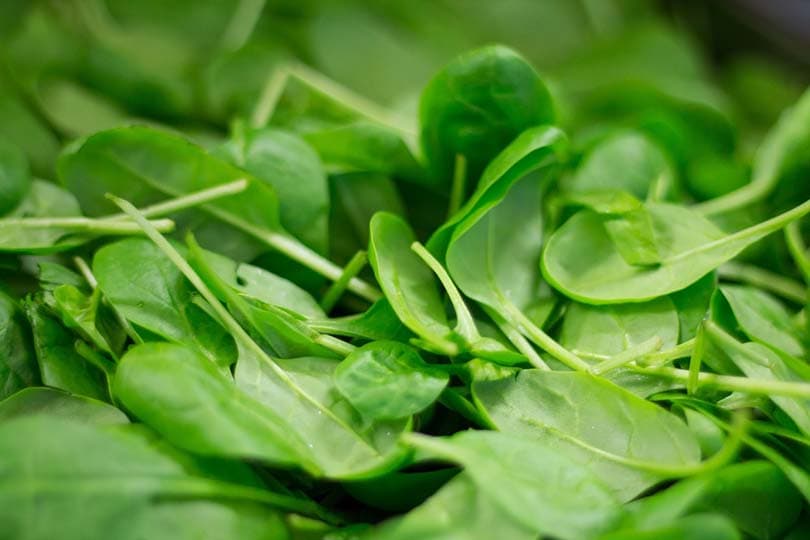
While spinach can be offered to your guinea pig in moderation, it is important to remember that it is high in oxalates and calcium, so offering it once or twice a week with a variety of other low-calcium leafy greens such as cilantro or romaine lettuce is a must. It’s a source of fiber, antioxidants, and other nutrients to enrich your pet’s diet. Another downside to spinach is that the large flat leaves can get contaminated with pesticides, so it’s important to wash them off before giving them to your pet. Although your pig can eat the entire leaf, it’s usually better to cut it into 1-inch squares to reduce mess.
16. Turnip Greens
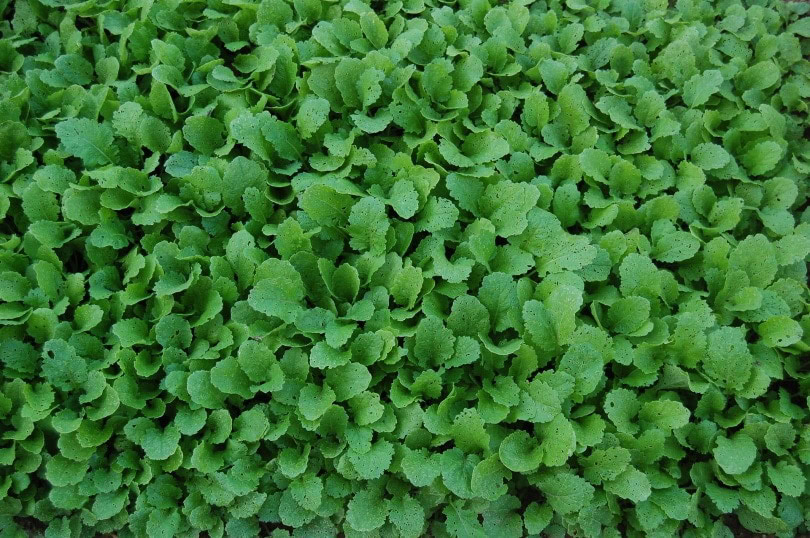
Turnip greens are another popular vegetable with plenty of helpful nutrients, but they contain too much calcium to give to your pet every day. If your pet enjoys this treat, you can chop up a small amount (one or two leaves) and serve it once or twice a week.
17. Zucchini
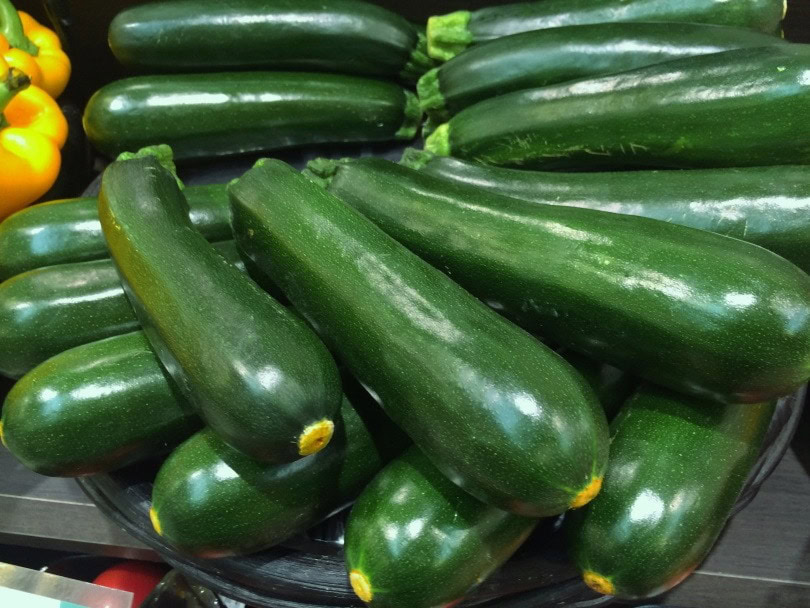
Zucchini is a nutritious plant that will provide your pet with plenty of immune system-building vitamin C and other helpful nutrients. There are no harmful side effects, so you can add it to your pet’s daily diet. Cut one or two tablespoons of zucchini into small, manageable pieces, and begin adding it to your guinea pig’s daily diet.

Conclusion
Of all the vegetables we have listed, the best ones are bell peppers, dandelions, romaine lettuce, and zucchini. However, for complete nutrition, it’s important to offer your guinea pig a variety of different greens and veggies on a continuous rotation. You can begin adding these foods to your guinea pig’s daily diet to help them get the nutrients that they need to live long, healthy lives. Wash the vegetables in warm water to remove any pesticides and wax that might be present, and cut the food into small pieces that your pet can manage. Always serve vegetables raw for maximum nutritional value.
- See also: Feeding Guinea Pigs
Featured Image Credit: Frauke Feind, Pixabay
